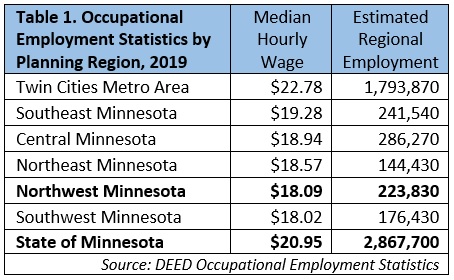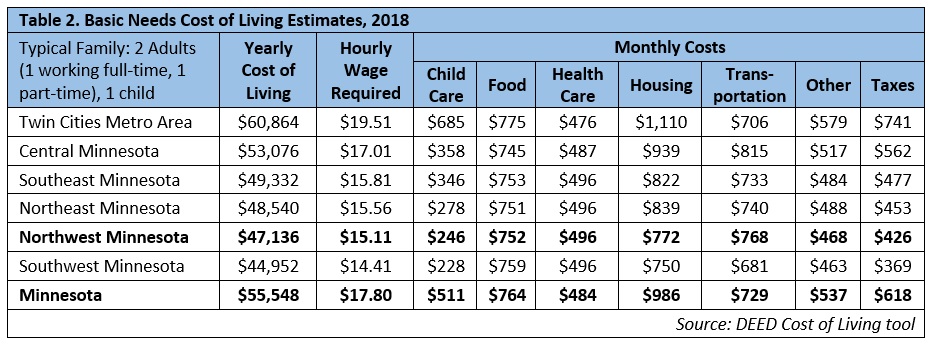 The presence of such industry powerhouses as Polaris, Arctic Cat and New Flyer make Northwest Minnesota a hub of transportation equipment manufacturing.
The presence of such industry powerhouses as Polaris, Arctic Cat and New Flyer make Northwest Minnesota a hub of transportation equipment manufacturing.
From wheat and potatoes to soybeans and sugar beets, the region is a major producer and processor of food staples and specialty agricultural products.
Want the freshest data delivered by email? Subscribe to our regional newsletters.
8/15/2019 12:00:00 PM
Cameron Macht
With a median hourly wage of $18.09, the 26-county Northwest Minnesota planning region has the second lowest median wage of the six planning regions in the state. Median wages were nearly $5 lower than in the Twin Cities metro area, and between $0.50 and $1.00 lower than the neighboring Northeast and Central regions, respectively (Table 1).


This simple comparison means that well over half of all occupations in the region provide a wage that would allow a typical family to meet a basic needs cost of living. This includes over 430 detailed occupations employing nearly 155,000 people – or nearly 70 percent of jobs in the region.
However, that also means there are nearly a hundred occupations employing over 60,000 workers with median hourly wages that fall below that threshold. For example, there are 6,830 people working as cashiers, making it the second largest employing occupation in the region, with a median wage of just $11.83 per hour. Even at the high end of the pay scale, cashiers are not earning enough to meet the region’s basic needs cost of living.
A family can afford to have one worker holding a job below the wage threshold if it also has another worker that is earning above the required wage, but not all households have that luxury. Some households have just one worker, more children, or higher or lower costs in some of the major cost categories such as housing, transportation, food, or child care. For example, the hourly wage required for a single parent with two children was $27.74 in Northwest Minnesota. While there were still 175 occupations that had higher median hourly wages, there were just 43,260 people currently employed in those jobs, meaning they are likely harder to find.
Every household situation is different, so finding an occupation that is in demand and provides wages that can meet or exceed the region’s cost of living can be a unique challenge. DEED provides a wide range of data tools to help job seekers in the region find the career that fits their lifestyle.
Contact Cameron Macht at 320-441-6596.